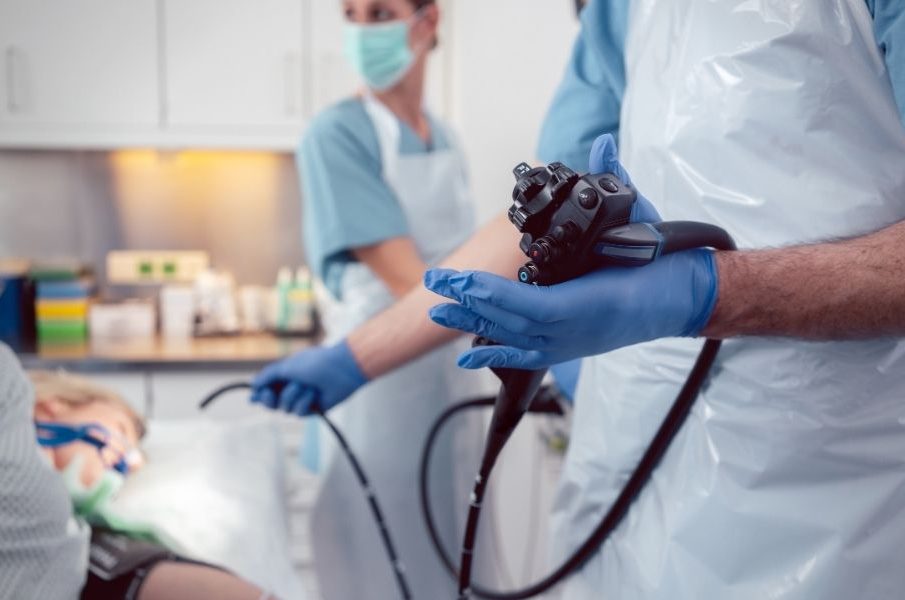Gastroscopy’s Role in Diagnosing Gastric Pain

Gastric pain is a common complaint that can range from mild discomfort to severe, persistent agony. While occasional stomach aches are often harmless, recurring or intense gastric pain may indicate an underlying medical condition that requires further investigation.
This is where gastroscopy becomes an essential diagnostic tool. By offering a direct view of the upper gastrointestinal (GI) tract, gastroscopy allows doctors to identify the root cause of gastric discomfort with greater accuracy than external tests.
What Is Gastroscopy?
Gastroscopy, also known as an upper endoscopy, is a medical procedure used to examine the lining of the esophagus, stomach, and the first part of the small intestine (duodenum). A thin, flexible tube called an endoscope is inserted through the mouth and gently guided down the throat. The tube has a small light and camera at its tip, transmitting real-time images to a screen for the doctor to examine.
This minimally invasive test is usually performed under local anesthesia or light sedation, making it well-tolerated by most patients. It typically lasts 15 to 30 minutes, and patients can usually go home the same day. In addition to observation, doctors can use gastroscopy to take tissue samples (biopsies), remove polyps, or treat bleeding ulcers—all during the same session.
When Is Gastroscopy Recommended?
Doctors may recommend gastroscopy when patients report persistent symptoms that suggest upper digestive tract disorders. These include ongoing nausea or vomiting, difficulty swallowing, unexplained weight loss, or signs of bleeding such as vomiting blood or having black, tarry stools. Most importantly, it is frequently used in the evaluation of chronic or severe gastric pain.
Since gastric pain can stem from a wide range of causes such as gastritis, ulcers, acid reflux, or even stomach cancer, gastroscopy allows healthcare providers to pinpoint the exact problem. Unlike imaging techniques such as X-rays or ultrasounds, gastroscopy offers a direct, clear view of the stomach lining and can detect subtle abnormalities that other methods may miss.
Common Diagnoses Made with Gastroscopy
One of the most frequent conditions identified through gastroscopy is gastritis, or inflammation of the stomach lining. It may be caused by infection with Helicobacter pylori bacteria, excessive use of NSAIDs, or alcohol consumption. Gastroscopy can confirm the presence of inflammation and allow for biopsy to test for H. pylori.
Peptic ulcers are another common finding. These are open sores that develop on the stomach or duodenal lining due to the corrosive effects of stomach acid. If untreated, ulcers can lead to complications such as bleeding or perforation. Gastroscopy not only identifies ulcers but can also be used to cauterize bleeding vessels or inject medications directly into the affected area.
In more serious cases, gastroscopy can detect gastric cancer or precancerous changes. Early detection dramatically improves the chances of successful treatment, which is why gastroscopy is vital for patients with risk factors such as a family history of stomach cancer or long-term symptoms.
Advantages of Gastroscopy Over Other Diagnostic Methods
The major advantage of gastroscopy lies in its precision. While blood tests, imaging, and physical exams provide useful clues, they cannot match the level of detail offered by direct visualization. Gastroscopy allows doctors to not only see abnormalities but also perform targeted interventions on the spot.
Another key benefit is the ability to take biopsies, which are crucial for confirming diagnoses such as cancer, celiac disease, or infections. These samples can be analyzed in a lab to determine the nature of the condition and guide further treatment.
Additionally, gastroscopy is relatively safe, with low complication rates when performed by experienced practitioners. Most patients experience little more than a sore throat for a day or two afterward.
Preparing for a Gastroscopy
Before undergoing gastroscopy, patients are usually advised to fast for at least 6 to 8 hours. This ensures that the stomach is empty, allowing for a clearer view. Patients should also inform their doctor of any medications, allergies, or health conditions such as heart disease or diabetes.
During the procedure, patients lie on their side while the doctor gently inserts the endoscope. If sedation is used, patients will need someone to accompany them home and should avoid driving or operating machinery for the rest of the day.
The Role of Gastroscopy in Managing Gastric Pain
For individuals suffering from persistent or unexplained gastric pain, gastroscopy provides both answers and relief. Once a diagnosis is made, appropriate treatment can begin—whether it’s antibiotics for H. pylori, medications to reduce acid production, or dietary and lifestyle changes.
Moreover, the reassurance that comes with a clear diagnosis can greatly reduce patient anxiety. Knowing whether gastric pain is due to a minor issue or something more serious is a critical step toward effective management and peace of mind.
Conclusion
Gastroscopy plays a vital role in the modern diagnosis of upper gastrointestinal disorders, especially when it comes to investigating gastric pain. By offering a detailed and immediate view of the stomach and related structures, it allows for early detection, accurate diagnosis, and in some cases, immediate treatment. For patients experiencing ongoing gastric discomfort, undergoing a gastroscopy may be the most effective way to uncover the cause and take the right steps toward recovery.














